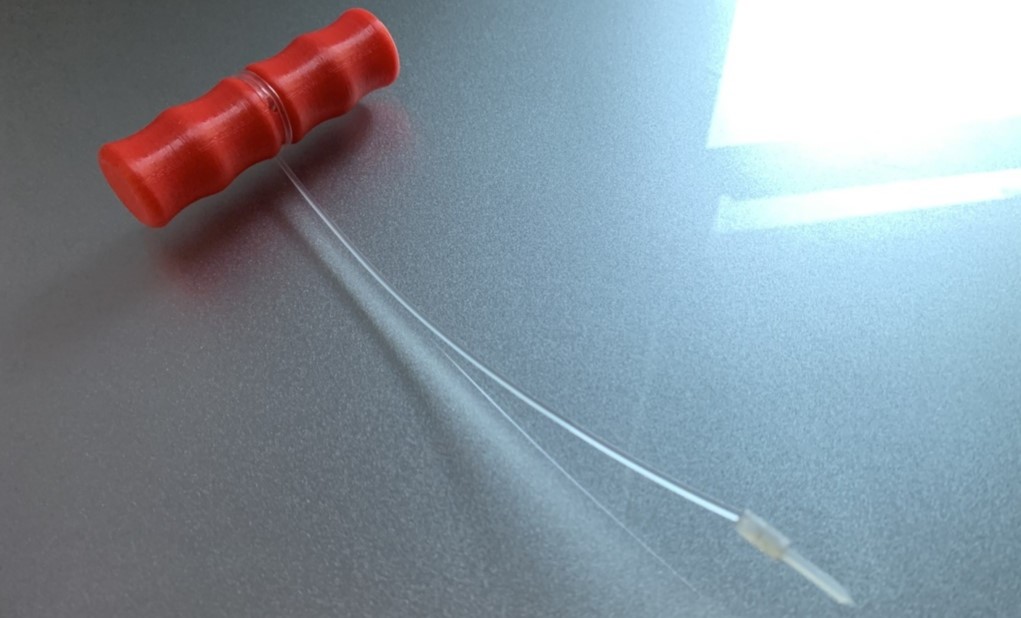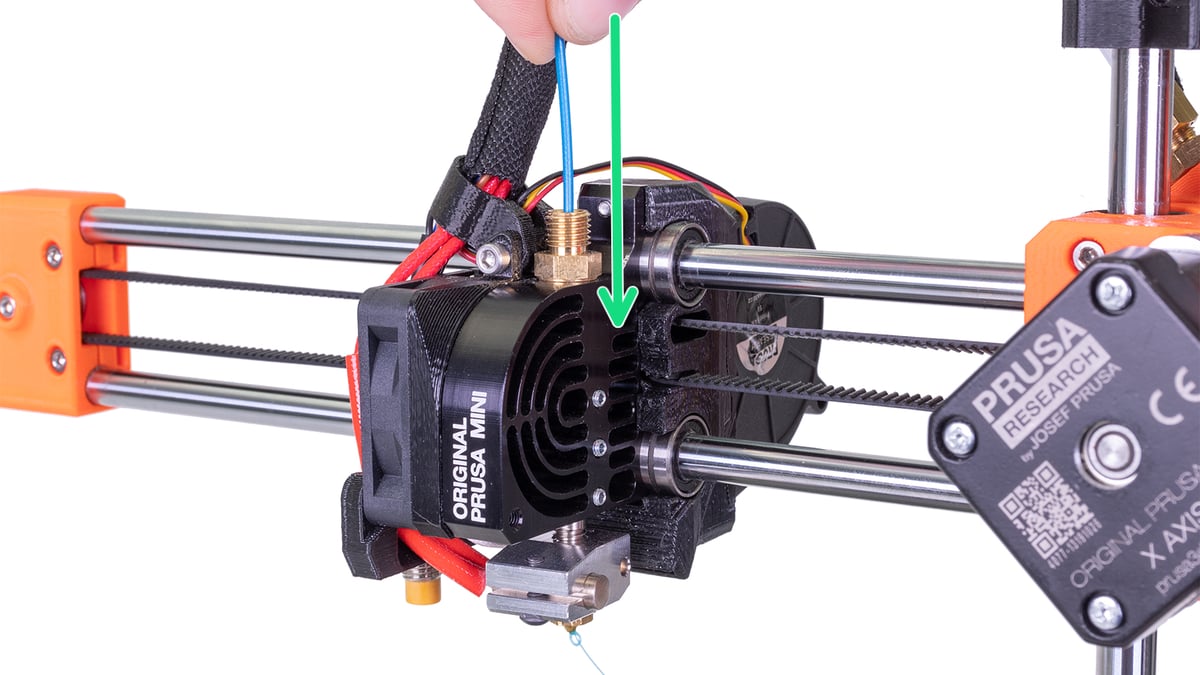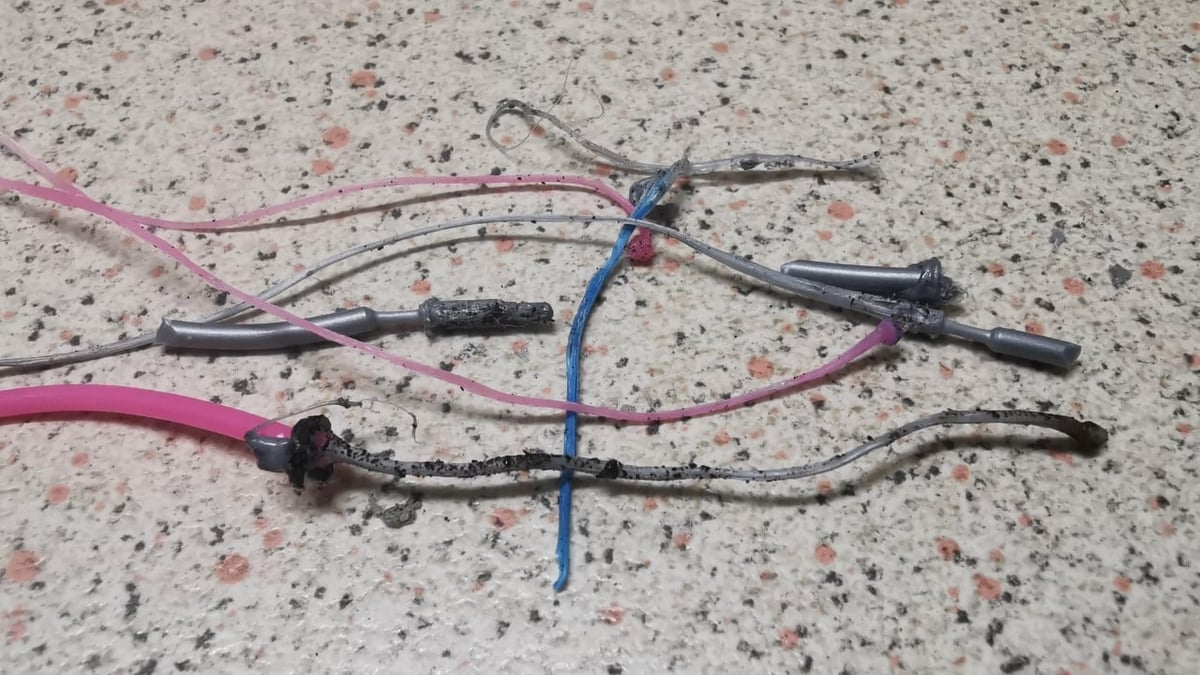Clogged nozzles can seem tedious to fix, but before you take your toolhead apart, try the cold pull method. This method makes use of a strand of filament and strategic temperature changes to unclog or clean a nozzle without dismantling the whole thing.
Also called the “atomic pull” by UltiMaker, this procedure involves using a strand of filament with a molten tip to pick up a glob of material, as well as other small debris, that’s clogging the nozzle, and then pulling the strand out, hopefully taking the clog and debris with it.
Repeating this cold pull a few times can fix many nozzle issues without having to dismantle the nozzle and risk injury or incorrect reassembly. So, it’s usually the first thing to try when you’re facing a clogged nozzle.
In this article, we’ll take you through how to perform a cold pull as your first line of defense.
What You'll Need

Generally speaking, the best filament for performing a cold pull is nylon. It’s typically recommended because it’s naturally slippery and thus less likely to snap when pulled out of the nozzle.
That said, if you don’t have any nylon lying around, go with your next slipperiest and least brittle material. PLA is generally more brittle than PETG, although this might differ depending on the specific kind of material you have.
The color of the filament is also important. It’s best to use clear or lighter colors because it’s easier to see the residue sticking to the filament after you’ve pulled it out. If you don’t have either of these, you should at least use a different color than the filament that’s stuck. Otherwise, it can be very difficult to see how well the cold pull is working.
Aside from filament, you’ll need some cutters to cut a piece of filament, and keep some pliers handy to remove the filament slowly and steadily. That’s all you’ll really need, but some makers have designed other nifty tools to help facilitate the process.
Steps

Here’s how to perform a cold pull:
- Remove any filament that’s fed into the extruder. If your printer has a Bowden extruder, remove the PTFE tube from the printhead.
- Heat up the hot end to the printing temperature of your chosen cold pull filament.
- Feed the cold pull filament through the top of the printhead and into the hot end. Allow some of it to start extruding out of the nozzle.
- Cool the hot end while applying constant pressure on the filament strand. Keep pushing the filament gently until it no longer extrudes through the nozzle and you can’t push any more of it through. This ensures the tip of the strand molds to the shape of the nozzle’s interior while cooling.
- Allow the hot end to cool to about 90 °C, then pull the filament firmly up and out of the printhead. If your printer has a direct extruder, you may have to loosen the tension on the filament.
- Once you’ve pulled the filament out, inspect the tip. If it’s pretty nasty looking and covered with residue, you’ll want to repeat the previous steps until the filament comes out clean.
Tips

There’s some variation within the community regarding how low the hot end temperature needs to be before extracting the filament. Some suggest going lower, while other suggest a higher temperature. Much of this depends on the filament you’re using for the cold pull. If you’re using nylon, for example, we’ve seen makers suggest starting the pull when the hot end cools down to around 110 °C.
All of that is to say, you have some wiggle room in how much you allow the hot end to cool. The main point is that you want the nozzle to be just warm enough to be able to release the filament – as well as all of the residue stuck to it – when you pull it out.
If you’re using PLA to do the cold pull, be extra careful when pulling it out. There’s a high risk of snapping it instead of pulling it out in one piece.
Lastly, if the cold pull process doesn’t resolve your clogged nozzle, make sure that everything is clean by trying the other methods in our article on nozzle cleaning. If you’re still having issues, you might want to try using a cleaning filament.
License: The text of "3D Printer Cold Pull: How to Do It" by All3DP is licensed under a Creative Commons Attribution 4.0 International License.

